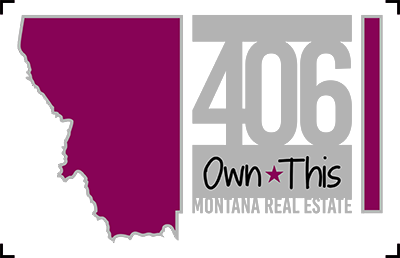IS IT TIME TO SELL?
3 things to consider, if you have a lot of equity
So, is it time to sell? Everyone has been shouting from the rooftops, “it’s a seller’s market, now is the time to sell”! Have you held on to that property for many years? Have you built up a great deal of equity? Now is the time to call me and get that important tool, the BPO (Broker’s Price Opinion). The tool you need when making that decision whether it’s time to sell:

CAPITAL GAINS TAX:
There are a few things to consider when deciding whether you will be required to pay capital gains tax. Was this your primary residence? Was this investment property? Let’s focus on primary residence as the investment property gain is discussed in future articles. If you have a gain on the sale of your primary home, you may qualify to exclude up to $250,000 of that gain from your income if you lived in the residence 2 of the last 5 years. If you file a joint return with your spouse, you can exclude up to $500,000. Where this gets a bit tricky is, what if your spouse has recently, died? You can exclude up to $250,000 of your deceased spouse’s gain up to 2 years after their death, but you must contract and close on the home prior to the 2-year expiration. Once the 2 years has passed after the spouse’s death, then that exclusion is lost. In making the decision to sell, it’s best you look back through your records and calculate the possible gain. When calculating your gain there are many costs associated with the purchase and maintenance of your home that needs to be added to your ‘basis’. The following is a list of items, that can be added to your purchase price, see if any of these apply to your situation. (Sampling of items, check with your tax accountant for a complete list)
Closing Costs when purchasing: Title Fees
Legal Fees
Recording Fees
Title Insurance
Improvements add to the value of your home and prolong the useful life. In calculating, add the costs of additions and improvements:
Additions, such as: Bedroom, Bathroom, Garage, Porch, Deck or Patio
Landscaping, such as: Driveway, Lawn, Fence, Retaining Wall, or Swimming Pool
Exterior, such as: Siding, Windows, or Doors
Insulation, such as: Attic, Walls, Floors or Pipes
Systems, such as: Heating, Cooling, Water, Security, Sprinkler, or Water System
Plumbing, such as: Septic, Filtration, or Water Heater
Interior, such as: Built-In Appliances, Flooring, Wall to Wall Carpeting or Fireplace
Remember, when selling you will also add in the cost of selling your home, i.e. title fees, real estate commissions etc.

INSTALLMENT SALE:
The installment sale is a complex method but can be used to help defer some capital gain into future years. The installment method is primarily used in the sale of business assets or interests. We will assume there is no outstanding mortgage on the property; and we are not selling it to a related party. On a primary residence, it’s best to use the first $250,000/$500,000 exclusion, if receiving installments on the sale of your home. Once the exclusion has been used up, then the remaining installments will be recognized as interest income and capital gain received in the year it was received. If the buyer is paying you interest in addition to principal payments, the interest is received as interest income. This is a great time to have that conversation with your tax accountant to see if an installment sale might help you.
INHERITED PROPERTY:
Real estate is that one investment that when you die any capital gain on the property up until date of death disappears. The property could have been your primary residence or your investment property.  You have that BPO in hand, you know what your property could sell for in the current market. You have calculated your basis by adding purchase fees and improvements to your original purchase price. You realize your gain is going to exceed what the IRS allows as an exclusion. While it’s not easy to know what the real estate market will be like in the future, it is safe to assume you can increase your BPO by 3-5% cost of living adjustment each year. For example: You and your spouse purchased your primary residence 40 years ago for $50,000. Over the years, you have improved your home with an addition and other new improvements. You have added $40,000 in improvements. Your basis in the home is now $90,000. You live in a market that has seen a lot of appreciation the last several years. The BPO comes back and says the home’s FMV (Fair Market Value) is $875,000. The gain is $785,000 ($875,000 – $90,000). You and your spouse need to decide whether you want to pay the capital gain tax on the $285,000 ($785,000 – $500,000 one-time exclusion). At the present time, you both decide the house is working well for both of you as you get up in years and opt to stay in the home. Several years later, both die within 2 years of each other and the home is left in the estate. The couple’s heirs will inherit the home at the current FMV. The estate receives a BPO, on date of death, of $985,000. The heir’s basis in this property is $985,000. The heirs will report a taxable gain, should they decide to sell on any gain above $985,000.
You have that BPO in hand, you know what your property could sell for in the current market. You have calculated your basis by adding purchase fees and improvements to your original purchase price. You realize your gain is going to exceed what the IRS allows as an exclusion. While it’s not easy to know what the real estate market will be like in the future, it is safe to assume you can increase your BPO by 3-5% cost of living adjustment each year. For example: You and your spouse purchased your primary residence 40 years ago for $50,000. Over the years, you have improved your home with an addition and other new improvements. You have added $40,000 in improvements. Your basis in the home is now $90,000. You live in a market that has seen a lot of appreciation the last several years. The BPO comes back and says the home’s FMV (Fair Market Value) is $875,000. The gain is $785,000 ($875,000 – $90,000). You and your spouse need to decide whether you want to pay the capital gain tax on the $285,000 ($785,000 – $500,000 one-time exclusion). At the present time, you both decide the house is working well for both of you as you get up in years and opt to stay in the home. Several years later, both die within 2 years of each other and the home is left in the estate. The couple’s heirs will inherit the home at the current FMV. The estate receives a BPO, on date of death, of $985,000. The heir’s basis in this property is $985,000. The heirs will report a taxable gain, should they decide to sell on any gain above $985,000.
So much to consider when selling one of your biggest investments. Don’t take the decision lightly. Get information from your trusted advisors. Talk to your tax accountant and if you’re in the Billings, Montana area, call me. I would be more than happy to give you a Broker’s Price Opinion, so you have the tools needed to make that decision.
Happy Planning!
As your trusted Real Estate Advisor and Enrolled Agent, let me help guide you through the process.
Call me with questions,
Melissa Zimmermann, EA, Broker Owner
An Investment You Can Live In










